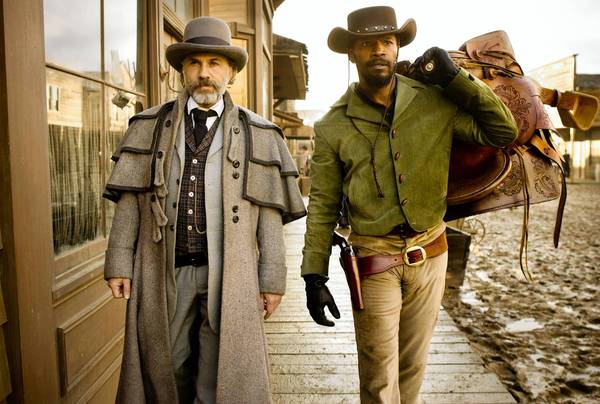My Top 10 Films of 2015
February 6, 2016 Leave a comment
1.
Mad Max: Fury Road (★★★★)
Directed by George Miller
Written by George Miller, Brendan McCarthy and Nico Lathouris
Bold, ingenious, and completely bonkers all the way through, George Miller’s “Mad Max: Fury Road” is a visual masterpiece with a story so concisely drawn out and to the point, full of convincing characters with curtly explained backstories that it elevates an already brilliant film to the level of near-perfection.
The story is so concisely drawn out and to the point, and full of convincing characters with curtly explained backstories that it elevates an already brilliant film to the level of near-perfection. Furiosa, simply put, is one of the coolest characters ever created, her face smeared with black engine grease serving as her war paint, the fire in her eyes. There is a real passion to Charlize Theron’s performance as Imperator Furiosa that drives the story forward, as she strives for hope in a hopeless land, and carries scorn for those who have scorned her, but not malice.
It helps that she is paired with an engaging band of characters, including five excellent actresses as the wives, the oft-silent Max, played by Hardy with subtle brilliance in a performance that is a lot of physicality, but also a lot of expressions and eyes, and wasteland tyrant Immortan Joe’s sickly soldier, Nux, played by Nicholas Hoult in a revelatory performance full of humor and sadness.
It’s remarkable to notice this in a film with so few quiet scenes, but I emphasize that “Fury Road” is not your run of the mill summer blockbuster. I wish this was the standard, as opposed to soulless, dull and dead-eyed stuff like the “Transformers” franchise or even movies that are playing it safe with formula and repetition, like many (not all) of the Marvel universe movies. Maintaining the sensibility and atmosphere of the previous “Mad Max” movies, but cranking the energy up exponentially, Miller realizes the full potential of this universe with “Fury Road” in a way that unsurprisingly took more than a decade to complete.
“Fury Road” establishes such an exciting new era of filmmaking for Miller, and proves promising for the modern action genre by indicating that there’s still hope to be foraged in what was starting to look like a hopeless genre. It’s the best film of the year.
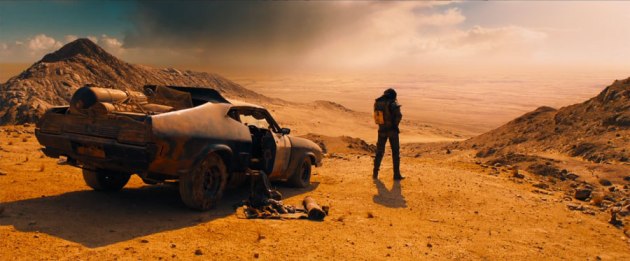
2.
Anomalisa (★★★★)
Directed by Charlie Kaufman and Duke Johnson
Written by Charlie Kaufman
Leave it to writer/director Charlie Kaufman to give us the most human, soul-piercing film of the year and to do it entirely with stop motion miniatures, and the voice talents of only three actors.
“Anomalisa” introduces us to Michael Stone (David Thewlis), a renowned self-help author who is visiting Cincinnati to speak at a customer service convention. We follow him as he arrives in town, takes a Taxi to the hotel where the convention will take place and where he will be staying. We also come to realize that everyone he meets has the same voice — that would be the great Tom Noon, who is credited for this film as playing “everyone else.”
That is Michael’s affliction, or perhaps it could just be Kaufman’s fascinating way of presenting a person’s perception of his or her life as having become completely mundane and passionless. Either way, what we experience with “Anomalisa” is a man caught in a strange, Kafkaesque state of mind where he no longer enjoys any kind of modulation among the people he meets — everyone is the essentially the same person with the same voice, even in the music that he hears through his ear buds and in the hotel lounge.
This monotony of spirit is brought to a sudden, startling halt when Michael, from his hotel bathroom, hears someone outside in the hallway… someone whose voice is different than all of the others — that would be the great Jennifer Jason Leigh, who creates a fully fleshed out and complex character here and helps us to forget for a time that these are just miniatures, and that we aren’t actual watching living, breathing actors on screen.
While “Mad Max: Fury Road” is certainly the finest crafted BIG movie of 2015, it goes without saying that “Anomalisa” is the most beautifully and meticulously crafted miniature movie. So much work went into making this small world a reality, and all efforts have led to this final masterwork of human communication, heartache, pettiness and hope.
Kaufman is the man who brought us such cerebral masterpieces as “Being John Malkovich,” “Adaptation,” “Eternal Sunshine of the Spotless Mind and “Synecdoche, New York,” all four-star films in my book, and as with all of his previous work, “Anomalisa” reflects the serious questions, anxieties, feelings and observations about life, death, love and existence that are caught and sifted out of the fascinating filter of their writer’s mind, and what a mind it is.

3.
The Hateful Eight (★★★★)
Written/Directed by Quentin Tarantino
Funny, violent, mean, but certainly not lean, Quentin Tarantino’s 8th movie is his longest (nearly 3 hours for the wide theatrical release, well over 3 hours for the 70mm roadshow presentation), and darkest cinematic outburst — I think outburst is just the right word for what Tarantino does. As with his previous work, “The Hateful Eight” feels like an erupting surge of ideas, a culmination of story, ideas and characters straight out of the B-cinema that Tarantino treasures so much.
This time channeling Sergio Leone, Agatha Christie and John Carpenter, Tarantino creates eight of his most dastardly characters yet, shoves them all into a haberdashery to wait out a blizzard, and blends in elements of a Leone western, a Christie locked-room mystery, and Carpenter’s “The Thing.” Paranoia, festering grudges and racism pervade this small space, where in a post-Civil War Wyoming we see the threads of Tarantino’s quirky, quixotic style intertwine with a dark and complex history.
What’s really great is the way in which Tarantino takes his grandiose ideas about the United States then and now, and fleshes them out on a small scale. These ideas are personified by the eight main characters, including Tarantino regulars Tim Roth (as Oswaldo Mobray – the little man), Michael Madsen (as Joe Gage – the cow puncher), Samuel L. Jackson (as Major Marquis Warren – the bounty hunter), Kurt Russell (as John Ruth – the hangman), and Walton Goggins (as Sheriff Chris Mannix – the Sheriff).
Among all of these revved up, larger-than-life performances is that of Jennifer Jason Leigh (as Daisy Domergue – the prisoner), who is a newcomer to the Tarantino universe along with Bruce Dern (as General Sandy Smithers – the Confederate), and Demian Bichir (as Bob – the Mexican). Leigh gives the most nuanced performance and nearly steals the show away from the others, although to do so in a Tarantino movie when Jackson is involved is not a task to be taken lightly.
It must be said that “The Hateful Eight” is not Tarantino at his very best – that would be “Jackie Brown,” a film that displays both his complete control as a filmmaker and his ability to pay homage to past cinema, while also paving an entirely new way for himself. It also shows a balance of violence and depth of character and startling sensitivity that this, his eighth and most brutal film, lacks — although it serves up plenty of terrific plot twists and turns, abundant cutthroat, vengeance-fueled brutality, and still proves, yet again, that Tarantino is a filmmaker to be reckoned with.
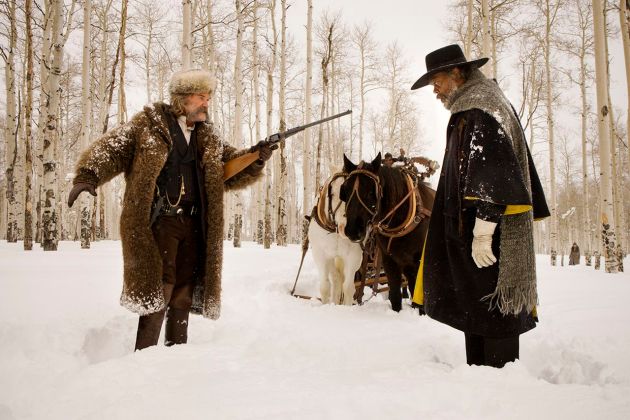
4.
The Stanford Prison Experiment (★★★★)
Directed by Kyle Patrick Alvarez
Written by Tim Talbott
“The Stanford Prison Experiment” is a film of chilling relevance and brutal realism, in which director Kyle Patrick Alvarez weaves a disturbingly familiar portrait of how the power structures that we ourselves design can ultimately lead to a break down in our humanity in favor of something more animalistic, and more frightening.
What is perhaps most dramatic, upsetting, and infuriating about the results of the Zimbardo’s experiment is that although it featured only a mockup of these environments, and a simulation of the structure of power that exists in reality, between those who are trusted with the job of maintaining peace and order, and those who live behind bars, there is an undeniable and harsh reality that bleeds from that experiment and stains us as a society.
A rivalry that develops between the “guards” and the “prisoners,” all students who happen to be pursuing degrees at one of the world’s most prestigious universities. The question that the study poses is if these Stanford students will resort to this kind of behavior when placed within these circumstances, what does that suggest for actual correctional officers and prisoners who have to face conditions like this on an everyday basis, and for real? And how do these structures of power affect situations outside of the prison system?
Everyone’s performance in this film is incredible, and like so many great films, “The Stanford Prison Experiment” echoes the time and place in which it has been made. We see the everlasting significance of Zimbardo’s study, and the sweeping relevance of Alvarez’s film, which, with its impeccable timing, strikes a serious nerve and stays with you long after it’s over.
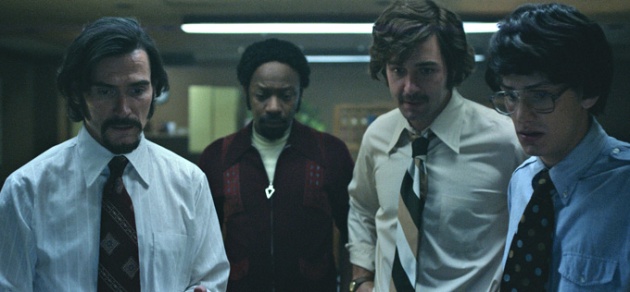
5.
Beasts of No Nation (★★★★)
Written/Directed by Cary Fukunaga
There is a tremendous sense of clarity and confidence built into Cary Fukunaga’s “Beasts of No Nation,” an incredible narrative and technical achievement featuring a powerful, ethereal score by Dan Romer, graceful writing, direction and cinematography by Fukunaga, and restrained, sincere performances all around.
Perhaps the most interesting observation I can make about this extraordinary film is how poetically the story is told. Fukunaga served as cinematographer on this film, as well as writer and director, and his visual style and fluid approach to storytelling calls to mind the transcendental work of filmmakers David Gordon Green (“George Washington,” “Joe”), Jeff Nichols (“Take Shelter,” “Mud”), and Terrence Malick (“The Thin Red Line,” “The New World”).
Fukunaga also has a way off taking more “showy” shots and blending them into the story without distracting us from it. There is one particularly amazing sequence that shows the fractured passing of time, and is communicates both Agu’s moral deterioration, and his lost perception of time and place, as the violence becomes such a frequent part of his everyday life that it actually begins to lose its impact on him.
The anonymity of the film’s setting enhances the urgency of the story and steers it out of the way of being a preachy, political sermon. This allows the film and us to focus on the real journey, where we witness a young boy’s loss of innocence as he is abandoned, and then rediscovered in a war-torn land. “Beasts of No Nation” above all is a human story, not one chiefly fixated on placing the blame, and who better than Fukunaga to guide us through the dark and find humanity living among the shadows?

6.
Entertainment (★★★★)
Directed by Rick Alverson
Written by Rick Alverson, Gregg Turkington and Tim Heidecker
When viewed shallowly, from a distance and with slightly squinted eyes, the very premise of Rick Alverson’s “Entertainment,” which he co-wrote with star Gregg Turkington and Tim Heidecker, is not an unfamiliar one. The idea here is that Alverson and company are taking something we have seen before in more conventional films about aging entertainers, and deconstructing it in order to get a fuller grasp, not on the story arc itself exactly, but more on what about this kind of story makes sense in a naturalistic sort of way, one that is not blurred or sweetened saccharine by clean resolutions or sentimental revelations.
Alverson’s film doesn’t contain a single disposable scene, or a scene out of place. It is refreshingly efficient in its storytelling, and proves Alverson to be one of the most focused, confident and uncompromising directors working today. He makes confrontational movies about confrontational people, and there’s something both unsettling and somehow completely brilliant and refreshing about his approach.
Turkington as a truly strange and fascinating to watch as he re-interprets his own real-life character for the film, which has been digested and reinterpreted by Heidecker, Alverson and himself, and then switches it off and becomes the hollow shell of a man. As the film progresses, the comedian struggles to communicate with others, both through his belligerent stage character (based on “Neil Hamburger,” a character that Turkington performs as in real life), whose act is made up of subversive, carefully constructed hacky jokes of misogyny, homophobia and overall distaste, and in his life off-stage.
That inability to communicate builds, driving the always restrained and subtly affecting story into increasingly surreal territory that paints the American Southwest as somewhat of a wasteland of washed up opportunity and spent talent. There is a lot of humor, but none of it comes without a little bit of a sting. That’s the kind of film Alverson is interested in making.
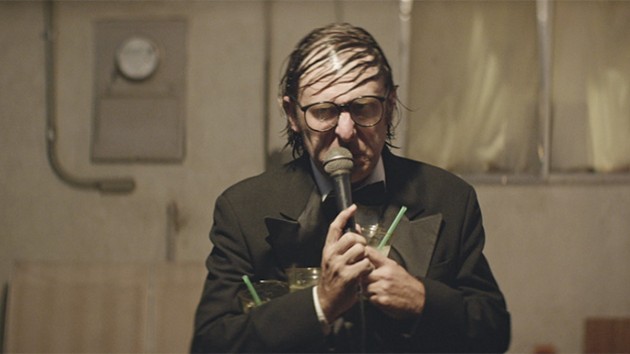
7.
Spotlight (★★★★)
Directed by Tom McCarthy
Written by Tom McCarthy and Josh Singer
“Spotlight” is a quietly harrowing thriller based on the 2003 Boston Globe investigation of sexual abuse in the Catholic Church. The Globe’s “Spotlight” team of investigative journalists published a story that year that revealed a staggering statistic, that 6% of Catholic priests have been guilty of pedophilia, and that the church itself has done everything in its power to conceal this fact from the public.
As we watch the true story of the investigation unfold, and witness the slow uncovering of this massive scandal by the Boston Globe journalists, the tension builds and builds. So does the characters’ (and our) exasperation with how far the corruption spans, within the church and beyond. There are scenes where victims are interviewed about their experiences of abuse that are completely devastating, and then there are scenes of rage where we see the lies and moral decay of the abusers and their allies.
There is also triumph, as the “Spotlight” team, with the publication of the story, at last reveals this issue to the world, and by extension provides a new avenue for hundreds of victims of abuse to come forward with their stories.
The best ensemble cast of 2015, including brilliant performance from Michael Keaton, Rachel McAdams, Live Schreiber, John Slattery, Stanley Tucci, Billy Crudup, Brian d’Arcy James and Mark Ruffalo, and a slow-burning and emotionally searing screenplay by Josh Singer and director Tom McCarthy, make “Spotlight” one of the great investigative journalism films — “All the President’s Men” and “Zodiac” are perfectly fair comparisons.
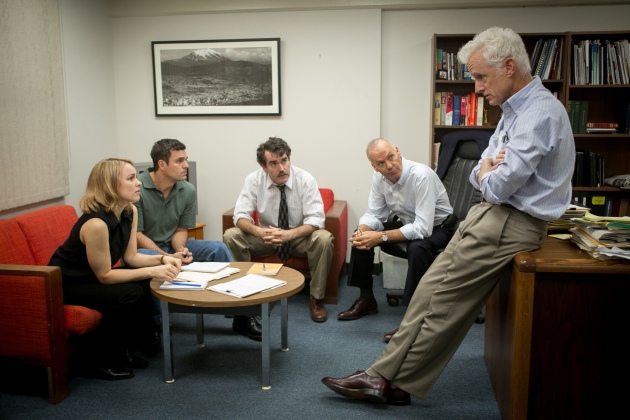
8.
The Revenant (★★★★)
Directed by Alejandro González Iñárritu
Written by Mark L. Smith and Alejandro González Iñárritu
Last year, mad-scientist Mexican filmmaker Alejandro González Iñárritu managed to grab 3 of the big Oscars for Best Picture, directing and writing for “Birdman,” a razor-sharp take on acting, theater, blockbuster movies and… well, whatever else “Birdman” was about, it was a wild ride, shot and cut to appear as though the entire thing was done in one single shot — this was, I think, used to great effect, and helped to earn another Oscar for Emmanuel Lubezki’s cinematography, which will again be noticed in Iñárritu and Lubezki’s new collaboration, the equally insane and technically breathtaking frontier film, “The Revenant.”
Leonardo DiCaprio stars as fur trapper Hugh Glass in this blisteringly cold but beautifully savage story of suffering and revenge. Glass was a real person who, in the 1820s, was abandoned by his men after being mauled within an inch of his life by a grizzly bear while on a fur expedition. In “The Revenant,” we act as witness to this harrowing and prolonged attack, and then watch as his team of hunters, led by Captain Andrew Henry (Domhnall Gleeson) attempt to resuscitate him and carry him onward back to camp.
Henry decides to lead all but two of the men back, and leaves the cutthroat John Fitzgerald (Tom Hardy), the younger and more naïve Bridger (Will Poulter), and Glass’ half-native American son Hawk (Forrest Goodluck) to watch over Glass and see to it that if he is given a proper burial should he perish from his wounds. Fitzgerald is a true snake who decides he’s had enough, and after killing Glass’ son, convinces Bridger that they must leave Glass to die in order to escape an impending attack by supposedly nearby hostile natives.
Glass survives once they’ve left, and film then follows him as he journeys through a frozen hell, returned from the dead, and fueled by a thirst for retribution against those who abandoned him.
“The Revenant” is a technical marvel, and features some of the most brilliantly framed and captured photography we have seen on screen. The production was shot in staggeringly cold conditions, in entirely natural light, and in geographical locations that are so isolated and unlivable that many cast and crew have come back with utter horror stories of working on this.
All of these touches and sweeping decisions layered in have made “The Revenant” a truly remarkable experience. With a sad, sometimes eerie and often atmospheric score by Ryuichi Sakamoto and Alva Noto, and brilliant work by both DiCaprio and Hardy, as well as Gleeson and Poulter who are great young actors working among giants and holding their own just fine.
Iñárritu is a treasure in the world of cinema, and carries onward a great legacy of films, from “Babel” and “21 Grams,” to “Birdman” and “The Revenant,” he has tirelessly delivered striking works of art that challenge, thrill and make us feel deeply.
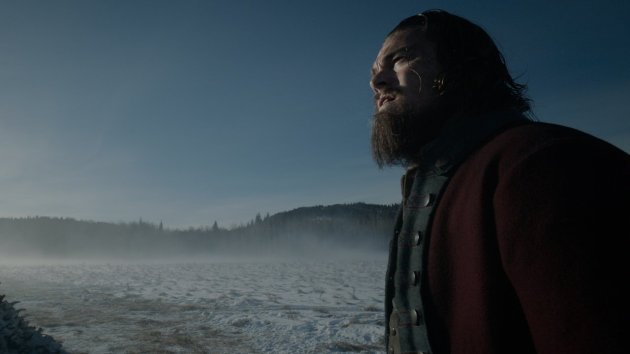
9.
Sicario (★★★½ )
Directed by Denis Villeneuve
Written by Taylor Sheridan
Haunting: That is the word to describe “Sicario,” director Denis Villeneuve and screenwriter Taylor Sheridan’s descent into the dark world of Mexican drug cartels and CIA intrigue.
Hold tight for the first quarter of this film, as it’s a slow burn in which we are pulled gradually into an increasingly disquieting realm of secrecy, drug trade and unimaginable atrocities via our avatar, FBI SWAT agent Kate Macer (Emily Blunt, never better), whose relatively naïve and innocent point of view — despite having helped discover dozens of decaying corpses hidden in the walls of a house, all victims of the cartel — matches ours. We know there are gruesome things going on, but are less aware perhaps of the extent to which the cartels are in charge. We also come to discover, as Kate does, the extent of our own country’s culpability for the drug-trade crimes being committed, and that is where the haunting really begins.
There are touches of Alfred Hitchcock and David Cronenberg here, as Kate is left in the dark about her involvement with the CIA task force led by Matt Graver (Josh Brolin), and for an inordinate amount of time knows close to nothing about why she is being assigned to join Graver and his mysterious partner Alejandro Gillick (Benicio Del Toro) on a Cartel-related mission in Mexico. She eventually discovers the truth, as we do, and her reality spins faster and faster out of control until everything she though she understood about right and wrong, good and evil, and who she can trust is tested.
Composer Jóhann Jóhannsson delivers a brooding score that further enhances our sense of foreboding, and cinematographer great Roger Deakins captures some of the most striking and strange overhead shots of the Mexican desert I’ve seen, framing it almost as an alien place that could stand in for another planet in another galaxy. This adds to the out-of-place out-of-time anxiety that Kate begins to experience as she realizes she is way over her head.
Villeneuve, whose previous work includes “Prisoners” and “Enemy,” once again reveals as he did with those films his fascination with the fragile morality of man — this time, he layers it further into genre than ever before, weaving his themes into a story that is both a taught, nerve-shattering crime thriller, and a relevant web of horror that exists just south of the border.

10.
Krampus (★★★½ )
Directed by Michael Dougherty
Written by Todd Casey, Michael Dougherty and Zach Shields
Writer/director Michael Dougherty’s “Krampus” is perhaps one of the most unlikely and surprising genre masterworks in years. With his family cooped up in a house in the midst of a sinister winter maelstrom, 12-year-old Max Engel (Emjay Anthony) is teased and tortured by his visiting cousins, and angry about his parent’s looming separation, and so loses his temper, rips up his carefully composed letter to Santa Claus, tosses the shreds of paper to the wind, and unknowingly summons Krampus, the mythical demonic shadow of Father Christmas himself.
What follows is a tour de force of filmmaking, with creature and sound design that will rival any movie of its kind that has been released in the past decade. Drawing from a more practical bag of tricks than audiences are used to seeing these days (George Miller’s “Mad Max: Fury Road,” notwithstanding), Dougherty crafts a truly masterful series of set pieces in which we witness the wrath of Krampus and his minions — these include demonic Gingerbread cookies, man-eating toys, and eerie elves wearing elaborate masquerade masks. Krampus himself is saved for the final course, and trust me on this: he’s a doozy.
As with Sam Raimi’s “Evil Dead” series, though, there is a great deal of humor cut with the cries of terror and bewilderment. Dougherty manages to establish a solid tone throughout the film, from the confidant set up of the family quarrels, to the sinister snowstorm that drifts in and turns the neighborhood into a claustrophobic winter wasteland, a nightmare reminiscent of Frank Darabont’s world in his screen adaptation of Stephen King’s “The Mist.”
Dougherty’s film takes a well-earned place beside Joe Dante’s “Gremlins” and Ron Underwood’s “Tremors” as one of the great horror-comedies. It offers real scares and real laughs, often times simultaneously, and with a pitch-perfect ending, invigorating practical effects and sincere performances that seriously invest in the material rather than treating it with a wink and a nod, “Krampus” has true potential to reach holiday-tradition status — families hopefully will try to squeeze a movie about a Christmas demon somewhere in between “It’s a Wonderful Life,” “Elf” and “A Christmas Story.”
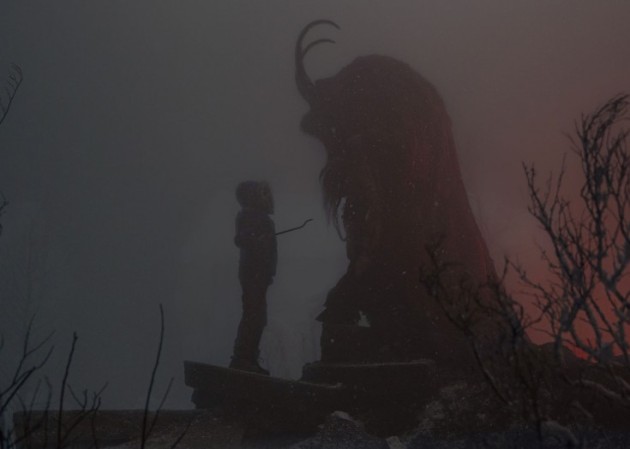
HONORABLE MENTION:
“Chi-Raq”
“Creep”
“Crimson Peak”
“Ex Machina”
“Inside Out”
“It Follows”
“Star Wars Episode VII: The Force Awakens”
“What We Do in the Shadows”



